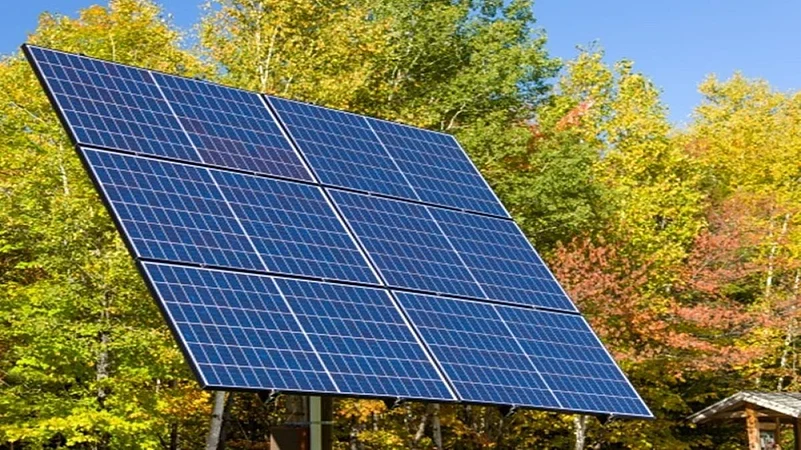Saudi Arabia’s ambitious Red Sea Project has captured global attention by constructing the world’s largest photovoltaic-energy storage microgrid.
This groundbreaking development is part of the nation’s Vision 2030 initiative and represents a significant leap towards sustainable energy in the hospitality sector. The project features an impressive 400 MW solar PV system paired with a 1.3 GWh energy storage system, marking a revolutionary step in the integration of clean energy into large-scale developments.
Leading this pioneering venture is global technology giant Huawei, in collaboration with Red Sea Global. The project aims to power a premier hospitality destination along the southwestern coast of Tabuk Province entirely with renewable energy. Spanning a massive 28,000 square kilometres, the Red Sea Project is not only reshaping the future of clean energy but is also setting a new standard for sustainable tourism.
Advertisement
In an interview with Gulf Business, Alex Xing, President of Huawei Digital Power for the Middle East and Central Asia, emphasised the significance of this project. “The destination is poised to be the world’s first fully clean energy-powered destination, and Huawei is honoured to participate in this project and help Saudi Arabia build a greener and better future through technological innovation,” Xing said.
The Red Sea Project is set to transform the region into a model of sustainable tourism, with the completion target set for 2030. The ambitious plan includes the creation of Red Sea City, which will feature 50 hotels offering 8,000 rooms, over 1,000 residential properties, and more, spread across 22 islands and six inland sites. The city is expected to accommodate up to one million visitors annually, all benefiting from off-grid, clean energy provided by the project’s advanced systems.
Advertisement
Central to this vision is Huawei’s FusionSolar Smart String Energy Storage Solution (ESS), which will enable the Red Sea Project to independently meet its energy needs. This microgrid solution is designed to manage the intermittent and fluctuating nature of solar and wind power, ensuring the safe and stable operation of renewable energy systems across the expansive site.
Huawei’s involvement in the Red Sea Project underscores its commitment to sustainability, leveraging its technological expertise to contribute to Saudi Arabia’s green future.
Beyond the Red Sea Project, Huawei is making significant strides in renewable energy development worldwide. The company has been instrumental in several major solar power initiatives, reinforcing its leadership in the renewable energy sector. These initiatives range from utility-scale plants to commercial and industrial (C&I) scenarios, and residential applications.
For instance, in Dubai, Huawei played a key role in establishing a 25.8 MW Distributed Programme for Dubai Global Port Group. In China, the company collaborated with various partners to pilot the world’s first grid-forming battery energy storage system (BESS). Meanwhile, in Thailand, Huawei built Asia-Pacific’s largest single-site C&I PV and ESS plant at Mahidol University, which includes a 12 MW PV system and a 600 kWh ESS.
These projects highlight Huawei’s global influence and its dedication to advancing renewable energy infrastructure.
As a leader in the renewable energy sector, Huawei’s contributions are driving the global transition to a low-carbon future. By integrating bit, watt, heat, and battery (4T) technologies, Huawei is spearheading the development of new energy infrastructure for power systems, electric vehicles (EVs), and the digital industry.
Advertisement
By the end of 2023, Huawei Digital Power had helped customers generate nearly one trillion kWh of green power, saving 46.1 billion kWh of electricity, and reducing CO2 emissions by 495 million tonnes—equivalent to planting 680 million trees.
Earlier this year, Huawei introduced the innovative Intelligent Distribution Solution (IDS) at the 26th World Energy Congress in Rotterdam. Developed in partnership with ecosystem collaborators, the IDS addresses key challenges in the electric power industry, including high line losses, unreliable service, and the management of new energy loads.
Huawei’s dominance in the renewable energy sector was further solidified when it was recognised as the leading global solar photovoltaic (PV) inverter vendor in 2022, capturing a 29 percent market share according to Wood Mackenzie. The company’s shipments surged by 83 percent compared to the previous year, highlighting its growing influence in the renewable energy market.
Advertisement
As the world increasingly shifts towards digital energy solutions, Huawei is positioning itself at the forefront of this transformation. “Global nations’ goals to achieve carbon neutrality are driving a profound transformation in society and the economy.














